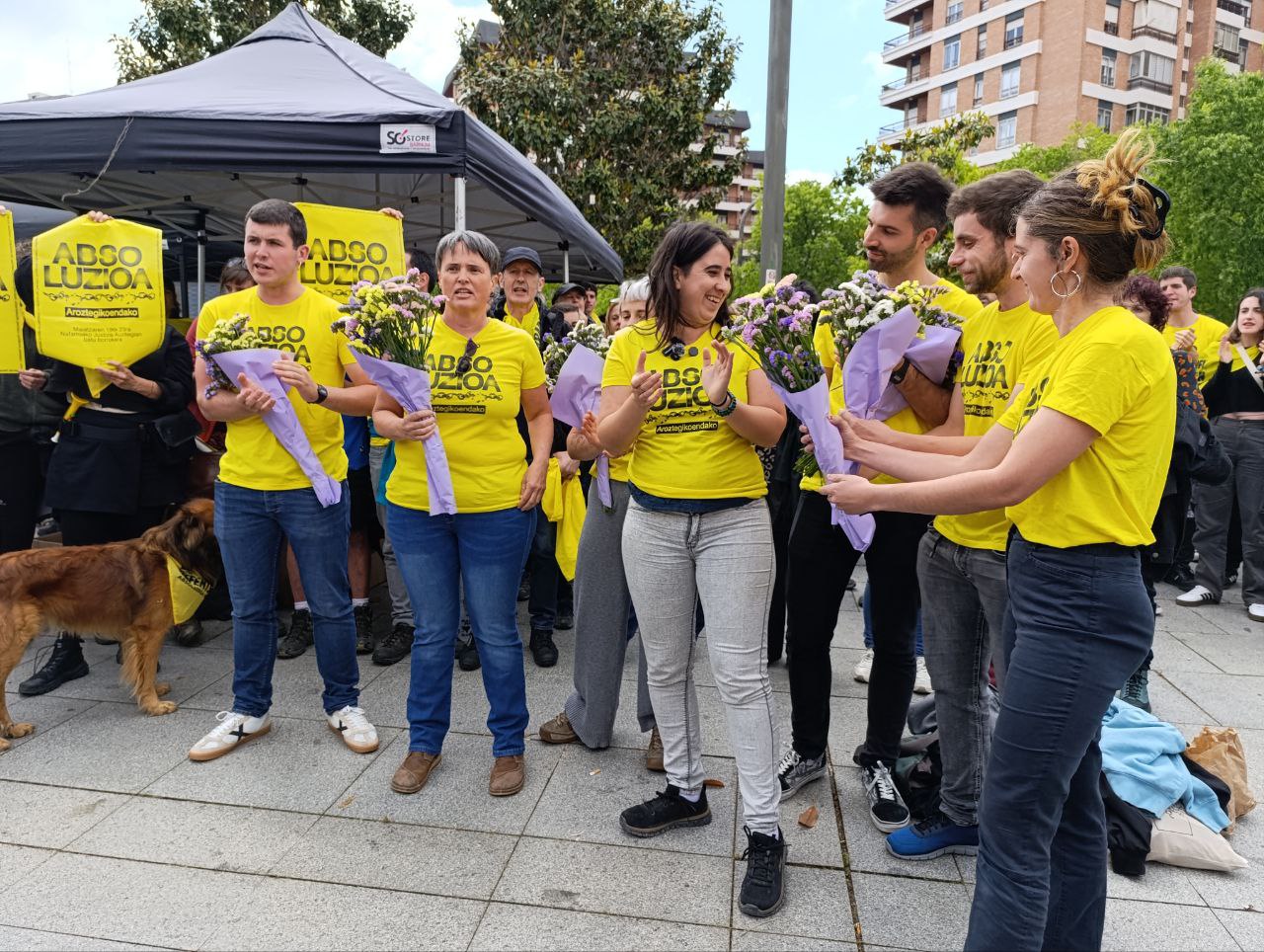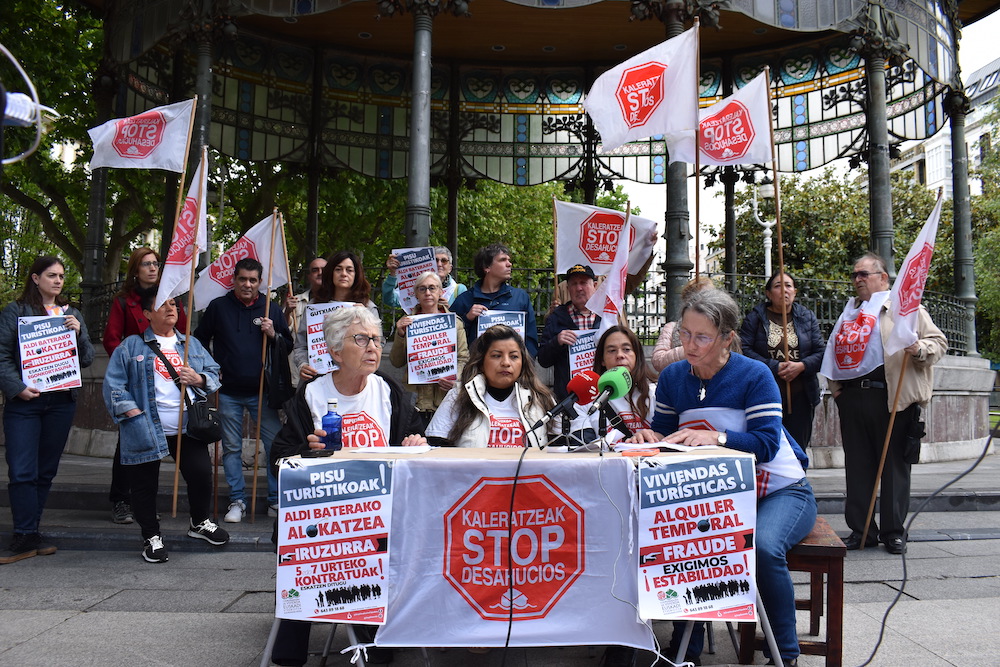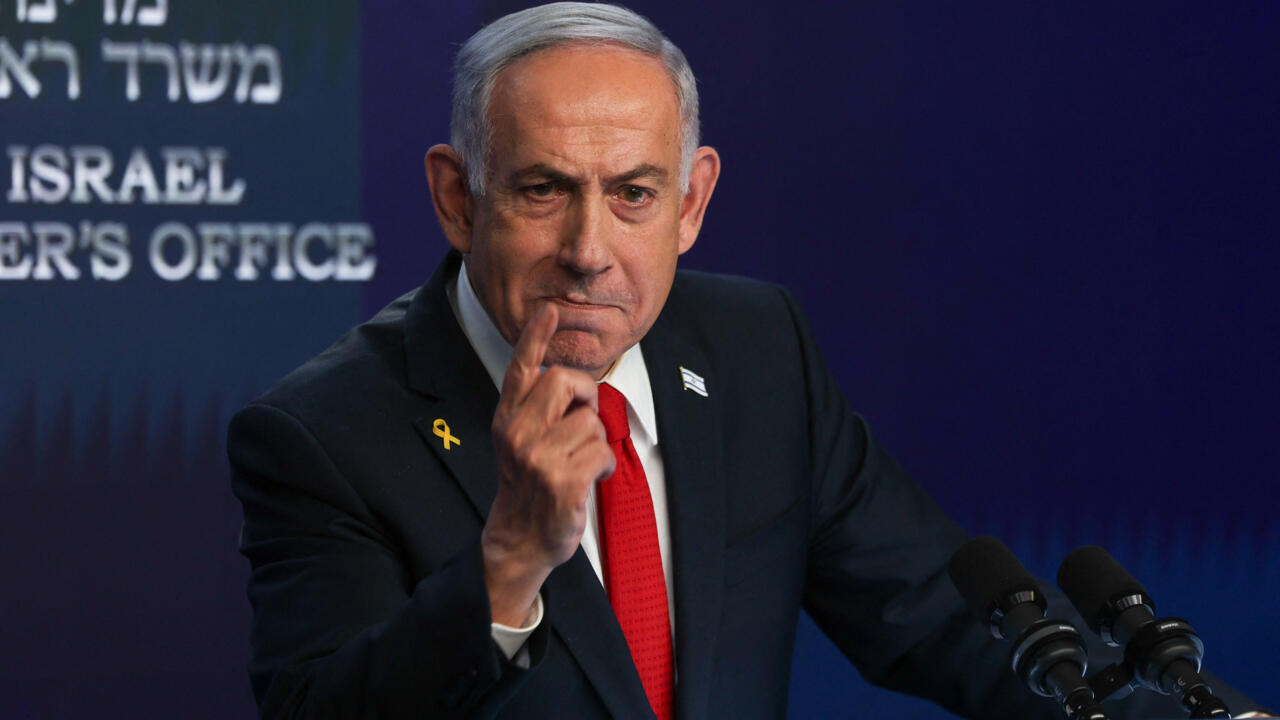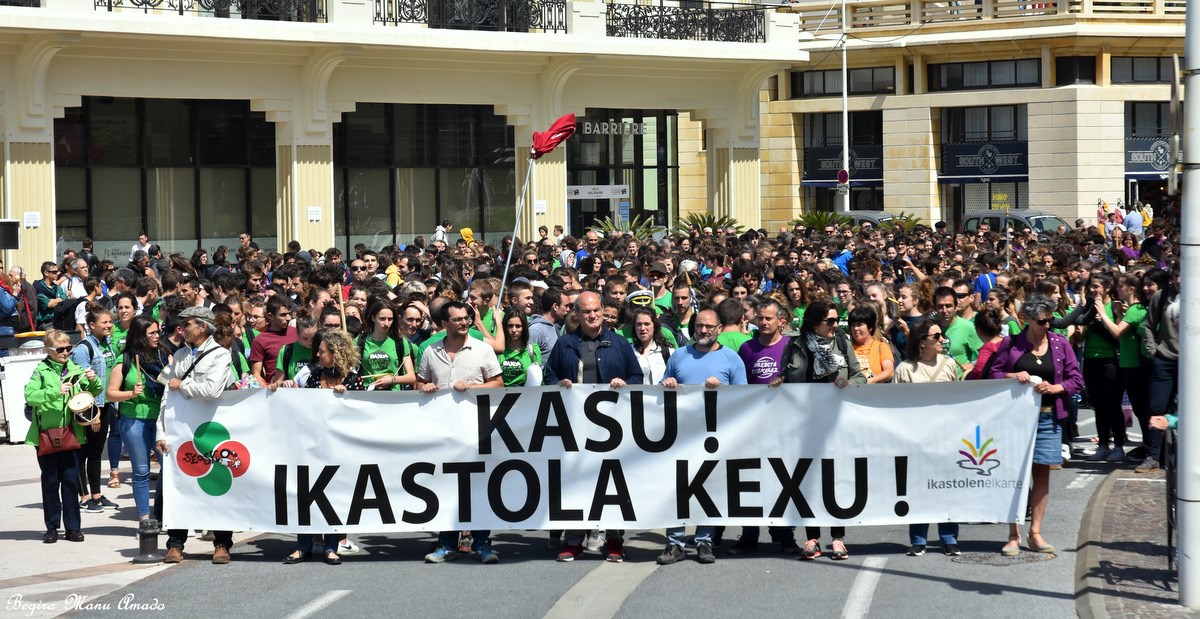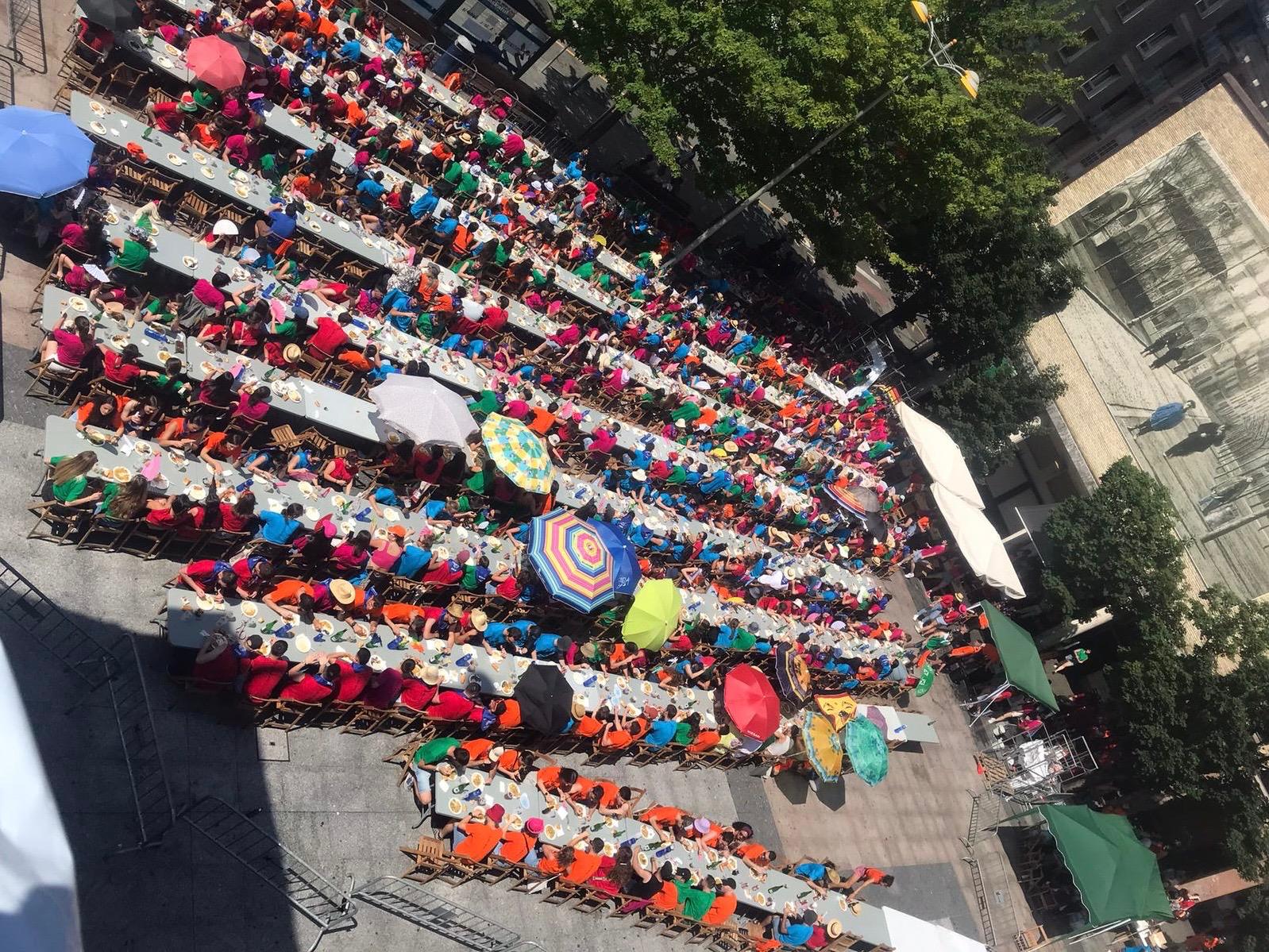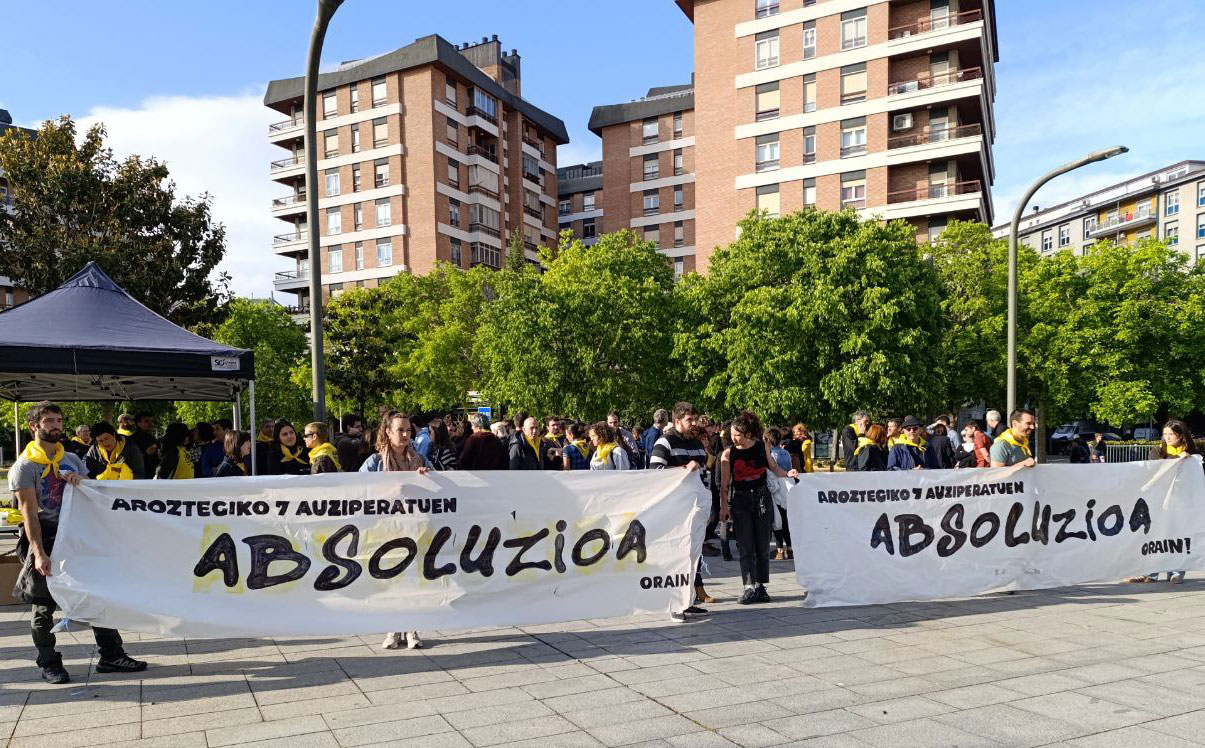Society
Environment
Politics
Economy
Culture
Basque language
Feminism
Education
International
Opinion
sunday 25 may 2025
Automatically translated from Basque, translation may contain errors. More information here. 
Maoist guerrilla and counter-insurgency XXI.eko in India
- While Communist China has condemned Mao Zedong to be an archaic totem, Maoist guerrillas are consolidated in the area. They have recently come to power in Nepal. The Indian government, for its part, does not succeed in destroying the “Naxalite” guerrillas or in dirty counter-insurgency.
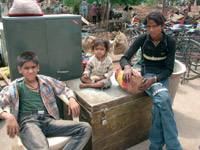
Chhattisgarheko hainbat biztanle"chhattisgarh"
Seven hundred million Indians live in absolute poverty. That is why it is not surprising that the Maoist guerrilla movement – the “Naxalite” – is becoming increasingly violent, and that the Indian Prime Minister designates this movement as “the most serious internal problem we have had since independence”. This is how journalist Cedric Gouverneur sums up the bloody conflict in India. Gouverneur has visited India in the middle of the salsa, sent by Le Monde Diplomatique magazine, where he has collected the opinions and calculations of the parties involved in the war, in addition to seeing the calamities suffered by the population.
Gouverneur visits the state of Chhattisgarh. This is the region in central India where the Maoists carried out the most tumultuous attack of the past year. On 15 March 2007, Rani Bodli village barracks were attacked and 55 police and militiamen were killed by three Scientology guerrillas who were set on fire from the jungle. Between September last year – the Diplo that we used as a source is from December – almost 500 deaths were caused by the conflict between guerrilla and government, and 750 in 2006.
The name “Naxalite” comes from the guerrilla group Naxalbari in northeastern India. Here, in 1967, the tenant farmers revolted against the landowner owner; all the rice they had in the warehouse was stolen from him. An action that citizens can keep in their memory. In the following years there have been many small guerrilla groups in many parts of India. Their impact increased sharply in 2004 when the two main political groups merged to form the Comunist Party of India (Maoist) and the People’s Liberation Guerrilla Army from their armed branches.
Over the years the Naxalites have expanded their activity to fourteen states, then sixteen, twenty-eight... They show their extremes in 192 of India’s 600 districts. And they continue to expand. Hence the concern of the Delhi authorities.
The journalist has managed to be with a second-class leader of the movement, whose senior leaders do not want direct contact because of security measures. “Our goal is to control the countryside where the state is weak, and then we will deploy this popular force to the cities. It's a long-term strategy. But globalization and its consequences, impoverishment and injustice, accelerate the process.” Journalist
Gouverneur has also spoken with more impartial experts. They have explained to him how patiently Maoist works have been carried out over the years, involved in the social forces that are concentrated in the demand of the smallest demands in each locality. That is, they have been strengthened to make the State aware.
Some believe that there are 10,000 armed guerrilla fighters operating in India at the moment, and others believe that there are 20,000. They are strong in a vast region that starts in the east of India from Nepal and the Himalayas and almost reaches the city of Madras. Although the guerrillas deny it, the authorities say they have been assisted in their preparation by the Tamil Tigers of Sri Lanka. In any case, everyone recognizes that the Naxalites produce many weapons, explosives, rockets and others in their own ateliers. Not to mention the shrimps and ammunition that rob the police and military during the attacks.
They make companies and businesses pay a “revolutionary tax” in the areas they control in part, which some experts believe is around 12% of the profits. Some experts say that the annual budget of the Comunist Party of India-Maoist (CPI-M) can be around 44 million euros.
Forced displacement of citizens
The Naxalites do not recognize the legitimacy of the Indian state and claim that they will not give peace until this is reversed. They are not tied to the national interests of a region or a people and work mainly among the poorest in India. In their campaigns they repeatedly call on the 125 million untouchable Dalits in India to be persecuted.
In addition to farmers and nomads, the message of the Maoists is increasingly passed on to the urban poor. India is considered by many to be one of the champions of globalization, but the great enrichment shown by macroeconomic figures does not reach the majority of the population: More than 400 million Indians live on a single dollar a day.
In the state of Chhattisgarh the Naxalites are working particularly hard. Gouverneur has been present and says that 3,000 guerrillas control 25,000 square kilometers. The guerrillas have been very successful among the Adivasi ethnic groups. The people who still live in the jungle from hunting and gathering are the majority in Chhattisgarh, and they had been suffering for many years from the ravages of the authorities and the police.
The CPI-M have brought hope to many adivasis... and even the uninhabitable. Without forgetting the damage caused by such an armed group – such as the forced transfer of young people to war – the authorities in Chhattisgarh have resorted to old counter-intelligence manuals, and have previously implemented systems experienced in the 20th century by the English in Kenya or South Africa, by the French in Madagascar or Algeria, by the Latin American military with the help of the gringos in El Salvador or Colombia, and in many other places in the adivasi areas.
Not only have they cut the throat of freedom of expression with anti-terrorist laws, but they have also launched the tactics most loved by the counter-insurgency military. These include the displacement of populations. Since the fish, like water, the guerrillas need the support of the population, they attack, destroy, massacre the suspects, and take the rest of the population to new residences, so that they live in subordination to the authorities far from their roots. Along with this, create paramilitary militias to help the government’s military hunt down guerrillas. Chhattisgarh's name is Salwa Judum.
Old tactics have yielded good results to the authorities, and the Salwa Judum militia model is emerging with other names in Jarkhand, Andhra Pradesh, and other states.
The journalist is surprised to see that some of the houses built for refugees are built with a harder subject than usual, such as cement. A human rights activist showed him the explanation. In Chhattisgarh, it’s not just about destroying guerrilla fighters. Under the soil of the meadows and forests here there are precious raw materials, mainly iron. Large industries are hungry for these lands, and instead of industry, India, which has increased mainly in services over the years. In total, they want for mines and industries those areas where adivasis have been living as nomads for centuries. Therefore, by mobilizing the populations, the land is freed and, in addition, labor is collected for the factories of the future in the new villages.
Will the Maoists repeat the success of Nepal? Or will the Delhi government suffocate them? In this friction, in many families, one child is involved in the guerrillas and the other with the paramilitaries.
Most read
Using Matomo
#1
#2
#3
Xabier Letona Biteri
#4
Nagore Irazustabarrena Uranga
Newest
2025-05-23
Xabier Letona Biteri
Chronicle of the Carpentry Trial (Day Five)
Without evidence, a harsh demand for punishment on the defendants
The Prosecutor and the Private Prosecution have confirmed the criminal charges against the seven defendants, who are sentenced to 46 months in prison and 56,000 euros in compensation for damages to the companies. The defendants’ lawyers have asked for their acquittal. The... [+]
2025-05-23
Maria Ortega Zubiate
Spanish government approves the largest photovoltaic power plant in Álava
231,000 panels will be installed across 100 hectares in the southwest of Álava: In Armiñón. EUskal will be the second largest solar park in the village.
2025-05-23
Gedar
New attempt to ban political prisoners in Spain
The PP has also proposed in the Senate to increase blackmail so that Basque political prisoners have to show remorse.
2025-05-23
ARGIA
The company that has signed Arantxa Tapia will design the government’s €1 billion investment
On May 22, the Basque Parliament approved a bill to indebt one billion euros to “influence science, technology, business and the industrial sector”. The media outlet Nago reported that the Basque Government has asked KPMG Asesores SL to develop the plan, which recently hired... [+]
2025-05-23
Irutxuloko Hitza
San Sebastian’s Stop Dismissal denounces the “fraud” of temporary rental contracts
A tenant from the Old Town of San Sebastian has managed to convert the rental contract for 11 months into a legal contract for five years.
2025-05-23
Maria Ortega Zubiate
Netanyahu Says ‘Palestine Liberated’ Today’s ‘Heil Hitler’
Netanyahu made statements after two employees of the Israeli embassy in Washington were shot dead. The Israeli Government has directly linked the Washington attacks to the statements of several European heads of Government against the massacre in Gaza.
2025-05-23
Jenofa Berhokoirigoin
French Education Minister Urged by Northern Basque Country Parliamentarians to Empower Seaska’s Resources
On 21 May, a letter was sent to the French Minister of Education, Elisabeth Borne, by the six parliamentarians of the Northern Basque Country. In view of the number of students there, the letter deplores the fact that the positions planned for the schools are "far too few".
2025-05-23
Elhuyar
Few companies in the global North are primarily responsible for conflicts related to the extraction of natural resources
Only one hundred multinational companies are behind 20% of all conflicts related to the extraction of natural resources, according to a study carried out by the Autonomous University of Barcelona. Research has shown that companies in countries in the global North are aware of... [+]
2025-05-23
Olaia L. Garaialde
"If we learn to eat with many rules, we may not notice the needs of the body"
The psychopedagogue Mireia Centeno Gutiérrez has given some clues about the feeding of children, such as the consequences of forcing them to eat and banning food.
2025-05-22
Xabier Letona Biteri
The defendants say that by group decision, everything was done peacefully.
The defendants testified on Thursday, and their statements could be summarized as follows: The citizens who gathered in the square of legumes or in the camping area decided collectively what to do, in general, to go to the field of the works and put them passively in... [+]
Eguneraketa berriak daude











